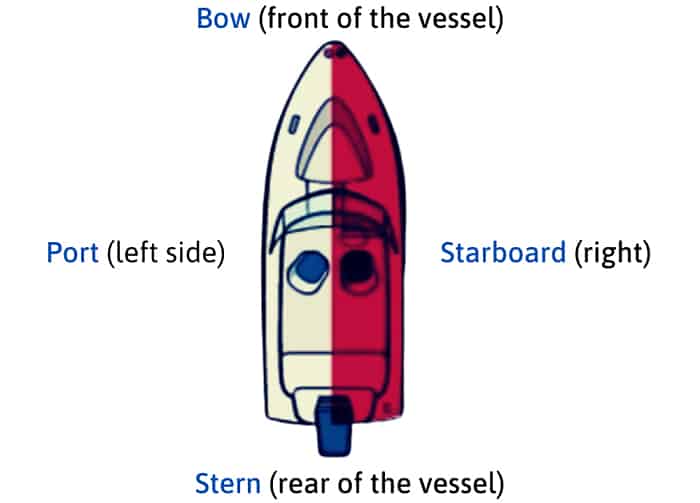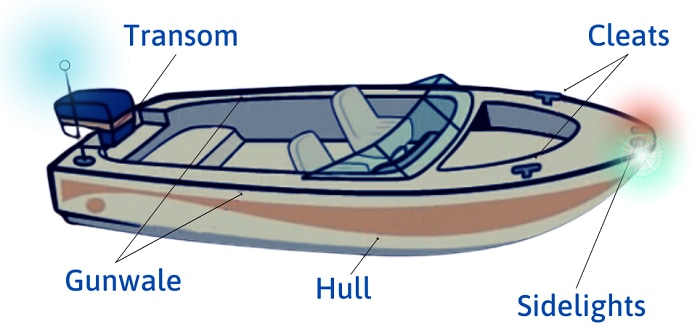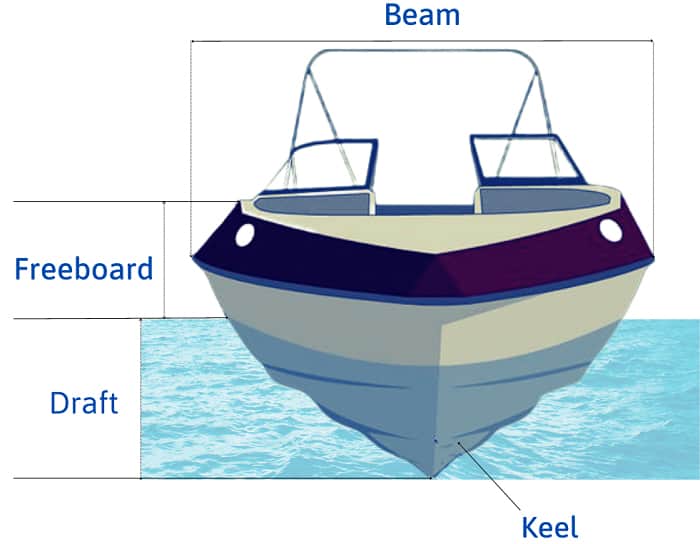Newbie boat owners often ask, what is the beam on a boat? Although some folks might laugh, the beam of a boat is the nautical term for a water vessel’s breadth at its widest points. It is one of many words that ordinary, non-boating folks are clueless about but may want to learn.
Please continue reading to find out more about the “beam” on boats and why it matters.
Table of Contents
What is Beam in Boater’s Language?
Let us understand a few nautical terms before we delve into the beam boat definition.
A boat’s bow is its front section, while boaters call the rear “stern.” If you sit in the boat, your right side is the starboard while the left is the port. Please remember these terms because we will refer to them when defining a ships beam.
Aside from these, you should also know about the gunwales. The gunwales make up the sides of the boat and are often made of wood or other strong materials.
1. Beam Definition
The simplest definition we could find for a boat’s beam is “maximum breadth or width.” It is a water vessel’s “cross-sectional” measurement or the distance between the starboard and port exterior surfaces.
Unfortunately, boaters do not always measure their vessel’s breadth at the gunwales. The beam width boat may be determined using the windshields or whatever widest points of the vessel are available. In any case, you may hear people call this measurement “beam overall” or BOA, which is just another term for “beam”.
If we look at a boat from the side, stern, or bow, we will notice the hull as having two portions. We have a visible section and another that’s submerged in water. The waterline marks that part of the hull where the upper section remains above water and the lower portion stays submerged.
We can also measure the boat’s beam relative to the waterline and call it “beam waterline.”
There is also a “beam centerline,” but this term only applies to multi-hulled water vessels. Examples are a catamaran (two hulls) and a trimaran (three hulls).
Beam centerline describes the distance between one hull’s centerline and another hull’s centerline at deck level.
You might also hear some folks using a boat’s beam and draft interchangeably.
Unfortunately, draft differs from beam. While the beam is a boat’s starboard-to-port measurement, its draft is the vertical distance between the boat’s lowest point underwater and the waterline.
If a boat’s beam is essential for stability, a watercraft’s draft is crucial for optimum floatation. It allows boaters to avoid piloting their watercraft to areas where they could run aground.
2. What it Means
We already know the beam boat meaning or definition. However, some folks might still ask what does beam mean on a boat.
Imagine a boat as a bus or car. The vehicle’s front-to-back measurement is its length. We call an automobile’s side-to-side dimensions its width. But in the case of water vessels, we call it “beam.”
Hence, a boat’s beam is the equivalent of a car’s width. So, “if you ask, where is the beam on a boat?” it would be at its widest parts.
3. Purposes/Pros and Cons
The next question you might ask is, why do you need to know a boat’s beam?
Boat builders and ship engineers design water vessels with the ideal beam to ensure “initial stability.”
Floating on water is not as smooth or stable as a car moving on paved roads. Forces impact the boat’s sides (starboard and port), pushing it laterally and causing it to tilt.
A boat with a higher beam value is more stable, allowing the watercraft to resist overturning or capsizing. However, this has the disadvantage of making the boat harder to right once it’s flipped over and harder to maneuver around obstacles.
The large size may also make docking tougher in small spaces, though most people will no doubt enjoy the interior area on a wide-beam vessel, where they can invite more people onboard and carry more gear during trips.
4. Beam Dimensions
The beam measurement on a boat depends on its aspect or length-to-beam ratio.
For example, the ideal beam to length ratio for small sailboats (i.e trailerable sailboats and dinghies) is 2:1. These watercrafts’ beams are about half their length. For instance, if the boat measures 18 feet long, its beam should be nine feet.
Meanwhile, racing sailboats can have a 5:1 aspect ratio. For instance, a 40-foot racing sailboat will have an eight-foot water vessel beam.
Ocean-going vessels have large aspect ratios (i.e., 20:1), while rowing shells with oars have 30:1 ratios.
Ways to Measure Beams
The simplest way to measure a boat’s beam is by using a tape measure, latching one end on the vessel’s port (or starboard) and extending it to the starboard (or port).
Alternatively, you can do some math if you know your boat’s length. The formula is:The simplest way to measure a boat’s beam is by using a tape measure, latching one end on the vessel’s port (or starboard) and extending it to the starboard (or port).
Alternatively, you can do some math if you know your boat’s length. The formula is:
- Boat’s beam = length overall (LOA)2/3 + 1
Please note that “2/3” is an exponent. Hence, you must raise the LOA value by two-thirds power before adding one (1).
For example, suppose you have an 80-foot yacht.
- Beam = LOA2/3 + 1
- Beam = 802/3 +1
First, we can square 80 to get 6400 (80 x 80 = 6400)
Next, we must find the cube root of 6400, giving us 18.57.
Alternatively, we can determine the cube root of 80 (4.31) before squaring the value to get 18.57.
Either way, you will end up with an 19.57-foot beam for the 80-foot yacht.
Other Beams on a Boat
It is worth noting that the term “beam” does not only refer to a watercraft’s breadth or width.
Boaters also use this word to mean the vessel’s structural support, running athwartship.
You might hear sailors talk about “astern or abaft the port beam or starboard beam.” Some might shout, “forward the starboard beam.”
We are more familiar with the phrase “dead ahead” than “forward the port or starboard beam,” which means the same thing. Meanwhile, “astern” implies whatever the sailors saw is slightly behind the port or starboard beam.
Conclusion
You are more confident now when somebody asks what is the beam on a boat. This term might mean something else in other contexts, but boaters and seafarers know it refers to a watercraft’s breadth or width.
It could be at the waterline or deck level. Regardless, a boat’s beam is essential in determining its stability in rough waters. The term should also be differentiated from other nautical concepts to avoid confusion.

Ten years of enjoying countless trips on boats never made me love them any less! So I am here to put all those experiences into good use for other boaters who want to have a safe and fun trip with their friends and families.





